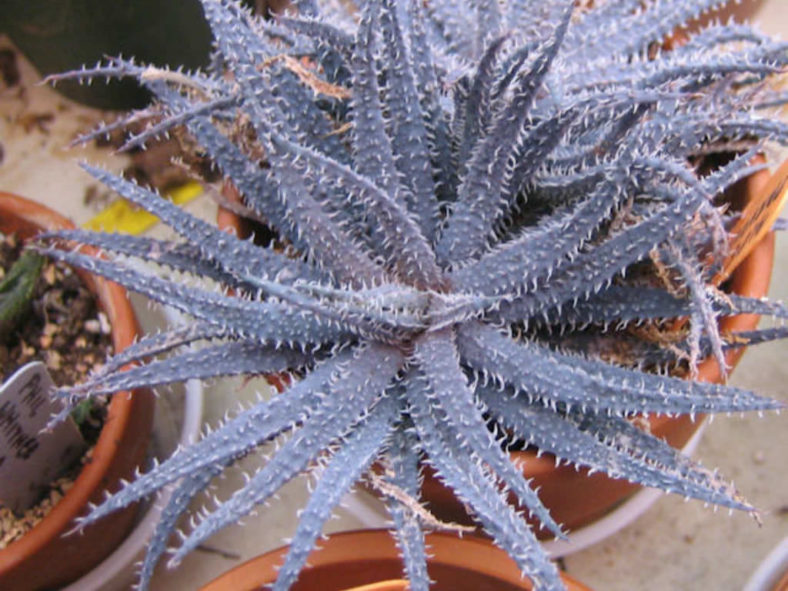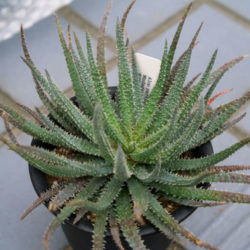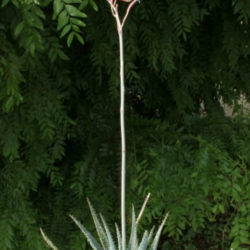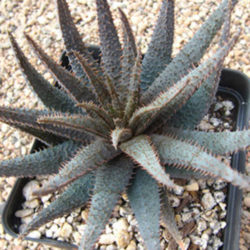Scientific Name
Aloe parvula A.Berger
Synonym(s)
Aloe sempervivoides, Lemeea parvula
Scientific Classification
Family: Asphodelaceae
Subfamily: Asphodeloideae
Genus: Aloe
Description
Aloe parvula is a small succulent that forms a stemless, usually solitary rosette of triangular leaves with small bumps tipped with small whitish teeth. The rosettes can reach 5 inches (12.5 cm) in diameter, sometimes producing offsets to form a small clump. Leaves are grey-green to blue-green and may turn dark purple in bright sunlight.
Flowers are tubular, up to 1 inch (2.5 cm) long, coral-red with a pale mouth, and hang loosely from usually unbranched, up to 12 inches (30 cm) tall stalks. They appear in waves a few times a year.
Origin
Aloe parvula is native to central Madagascar. It is a highly threatened species restricted to the quartz mountain range of the Itremo massif.

Hardiness
USDA hardiness zone 10a to 11b: from 30 °F (−1.1 °C) to 50 °F (+10 °C).
How to Grow and Care
Aloe is a very forgiving plant. However, as with all succulents, Aloe must never be allowed to sit in stagnant water, and the plant should be carefully monitored to watch for signs of overwatering.
Aloes are not particularly fast-growing and will only rarely need repotting. Repot plants in the spring that are tipping over their pots or have ceased growing. Use a fast-draining potting mix with one-third of sand or pebbles. When repotting a larger plant, dividing the root ball carefully is possible. Some kinds of Aloe will send off offsets that can be potted independently.
It needs intense, bright light. They can withstand full summer sun once acclimated. In the winter, provide bright light. It prefers warmer temperatures of 70 to 80 °F (21 to 27 °C) but will survive down to 40 °F (4.5 °C). Feed with a cactus fertilizer in the summer only. Suspend feeding in the winter as the plant goes dormant.
See more at How to Grow and Care for Aloe.
Hybrids
Links
- Back to genus Aloe
- Succupedia: Browse succulents by Scientific Name, Common Name, Genus, Family, USDA Hardiness Zone, Origin, or cacti by Genus
Photo Gallery
Click on a photo to see a larger version.


